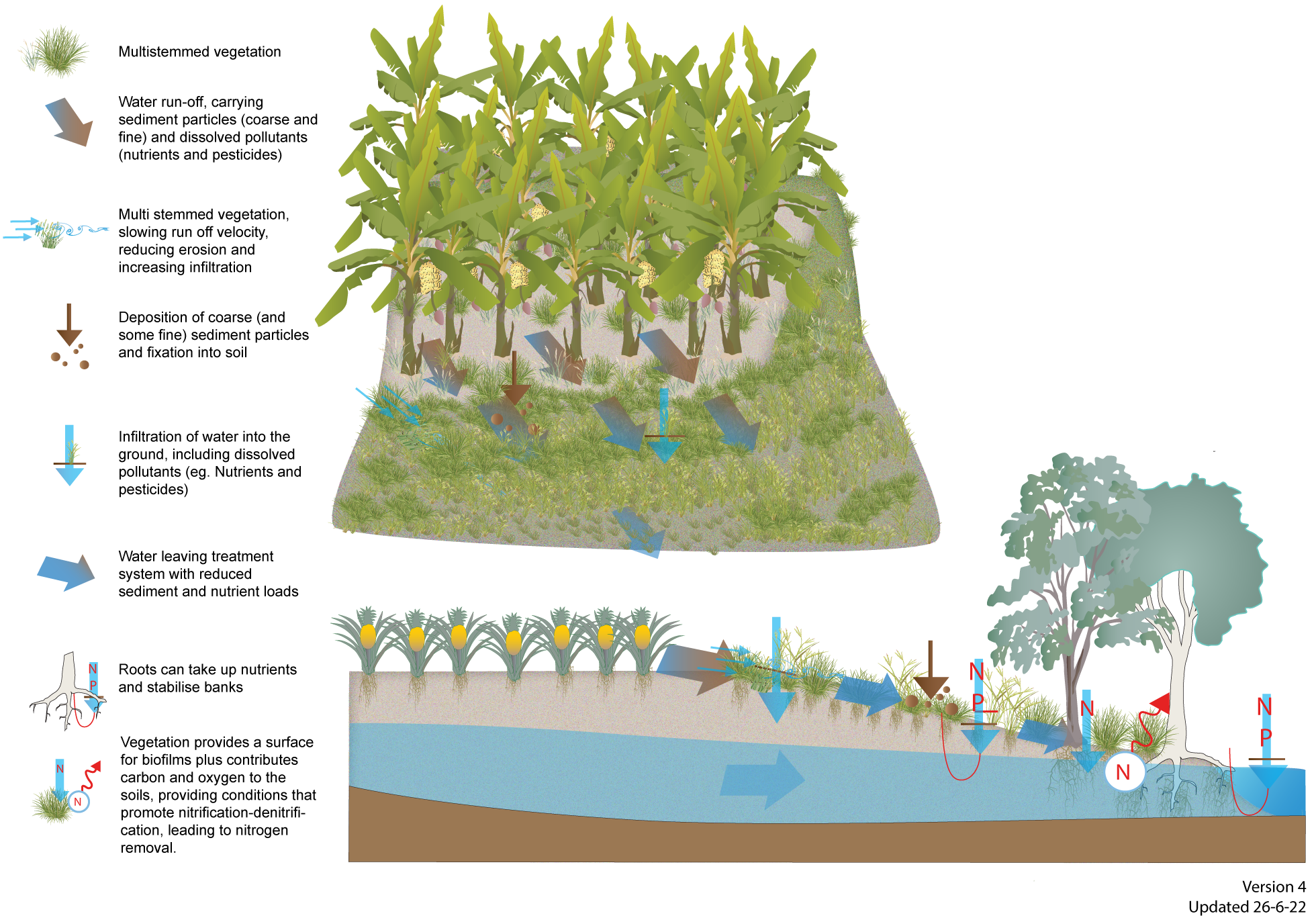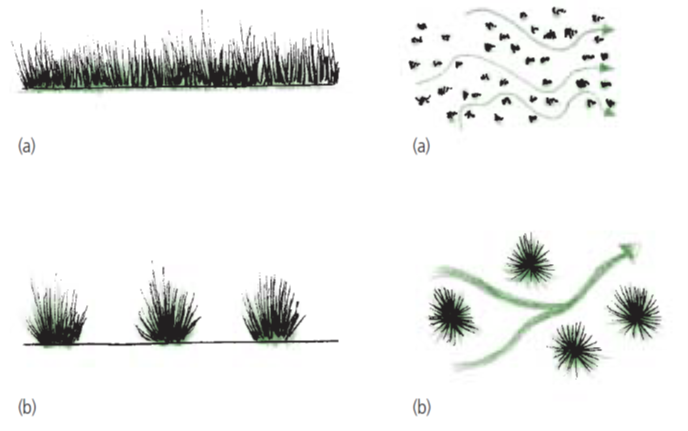|
|
Vegetated buffers and swalesVegetated buffers and swales — Construction and operationSelect from the tabs below ApprovalsBuffers and swales can make use of existing vegetation and should not involve removing any native vegetation. Approvals may be required for the construction of a treatment system. Contact your local government before any construction is undertaken to understand requirements. For example:
ConstructionBuffers and swales should require only minimal earthworks, as they should be located where flows naturally enter the area as sheet flow. Buffers and swales will generally be constructed at the same time as the farm or block is being established. Construction will generally involve earthworks to create the swale (batters, flat base, channel etc.) and to create a contour drain along the upper edge of the buffer to disperse flows into the buffer. The earthworks should be kept to a minimum to avoid disturbing acid sulfate soils and shallow bedrock. Exposing bare soils should be minimised during construction to reduce the risk of sediment moving off site. EstablishmentBuffers and swales need to be well vegetated using a mix of native grasses, sedges and rushes. Plants with a spreading/rhizomatous habit are ideal to promote even water flow and help resist traffic impacts[1]. The most cost-effective approach is to seed the system with a mix of native species, or if suitable vegetation exists nearby on farm, allow the vegetation to recruit or colonise naturally. Natural recruitment runs the risk of erosion, increased weediness and increased maintenance and may need to be supplemented with seed. Cost savings can be gained by using existing vegetated areas as buffers and swales. Where this is not an option grass seed can be a cheaper alternative to seedlings. Use local guidelines if they are available to assist with plant selection or contact your local Landcare or NRM group. Naturally vegetated systems such as waterways, wetlands and riparian zones are a good reference from which to create a species template. See plant guides. The dry season is the best time to establish a buffer or swale to reduce the risk of run-off induced erosion and allow time for plant establishment and root growth before heavy summer rainfall. Irrigation and weed management may be needed until the vegetation is fully established. A lack of vegetation cover in the buffer or swale can result inreduced treatment performance, erosion and weeds. Therefore, it is important that the vegetation in the buffer or swale is established successfully, as quickly as possible after earthworks. A buffer or swale can be constructed and established within a few months or it can take two to three years to establish vegetation depending on site conditions[2]. A sterile grass such as rye or millet can be used as an interim measure while slower growing species establish. OperationCovered in maintenance (below). Monitoring and maintenanceEnsuring adequate, dense (at least 80% groundcover) vegetation growth is the key maintenance objective for these systems[1]. Buffers and swales should be inspected every 6 months or after major rain events, to check vegetation cover is intact and ensure there is no erosion or sediment build-up. Regular maintenance will also minimise habitat for pests, such as rats. In addition, buffers can be actively managed to provide habitat for predators (e.g. plant trees and install nest boxes to attract owls)[3]. Typical maintenance will involve:
If farm best management practices are not adopted in the catchment, large amounts of sediment may be exported, quickly smothering buffers and swales. This will require frequent sediment removal and reshaping of buffers and swales, therefore preventing soil loss through best management practices is a priority. Lifespan/replacement timeVegetated buffers and swales should last indefinitely if adequately maintained and farm best management practices adopted. DisclaimerIn addition to the standard disclaimer located at the bottom of the page, please note the content presented is based on published knowledge of treatment systems. Many of the treatment systems described have not been trialled in different regions or land uses in Queensland. The information will be updated as new trials are conducted and monitored. If you have any additional information on treatment systems or suggestions for additional technologies please contact us using the feedback link at the bottom of this page. References
Last updated: 5 November 2022 This page should be cited as: Department of Environment, Science and Innovation, Queensland (2022) Vegetated buffers and swales — Construction and operation, WetlandInfo website, accessed 8 May 2025. Available at: https://wetlandinfo.des.qld.gov.au/wetlands/management/treatment-systems/for-agriculture/treatment-sys-nav-page/vegetated-buffers/construction-operation.html |

 — Department of the Environment, Tourism, Science and Innovation
— Department of the Environment, Tourism, Science and Innovation




